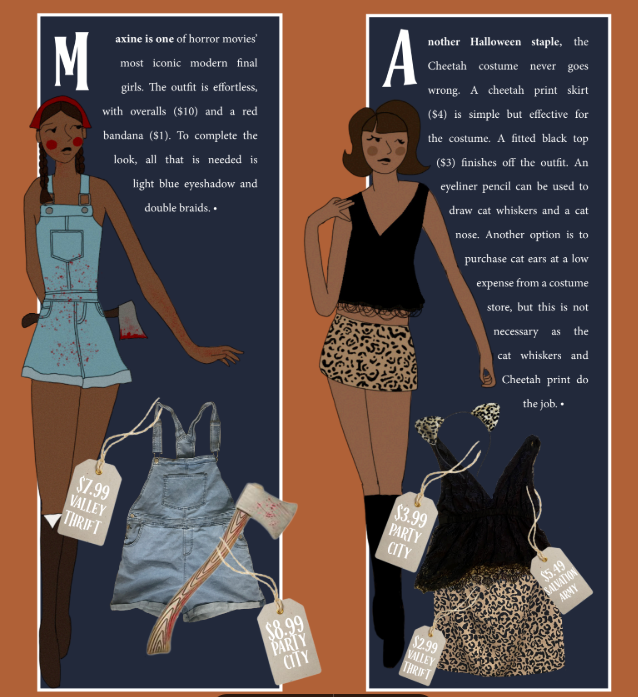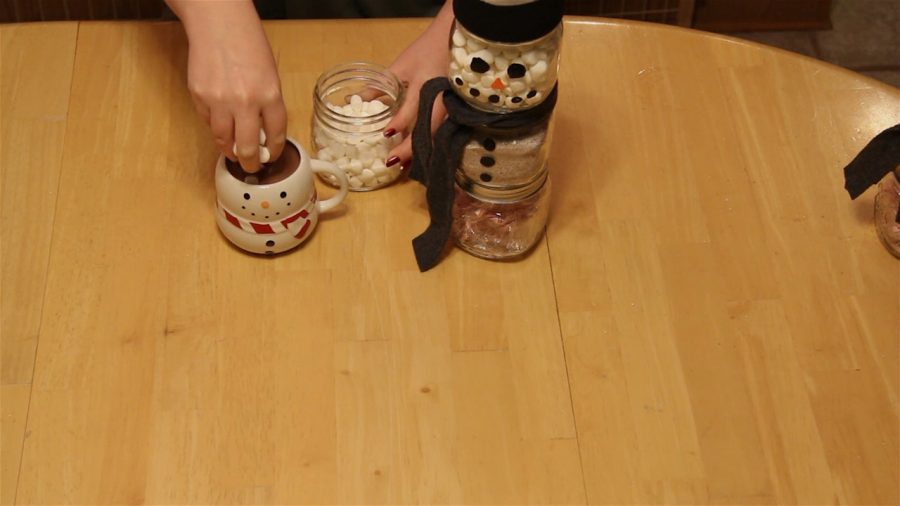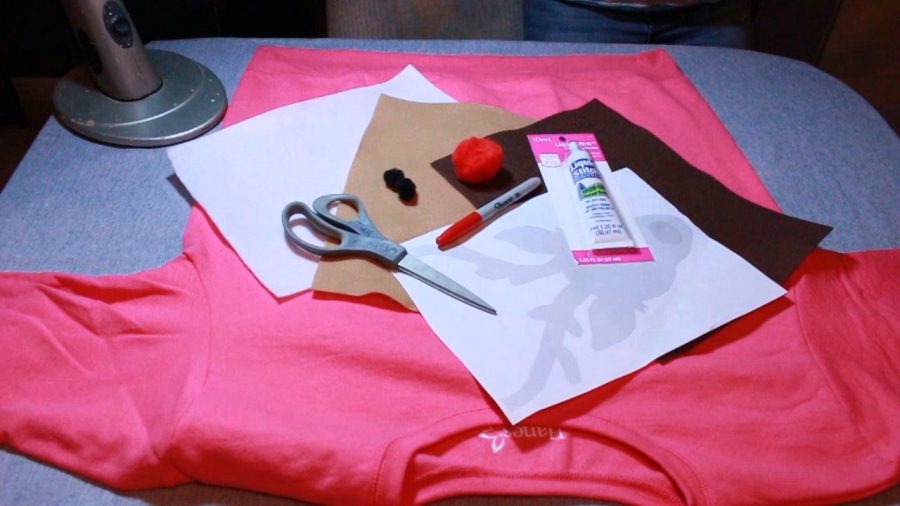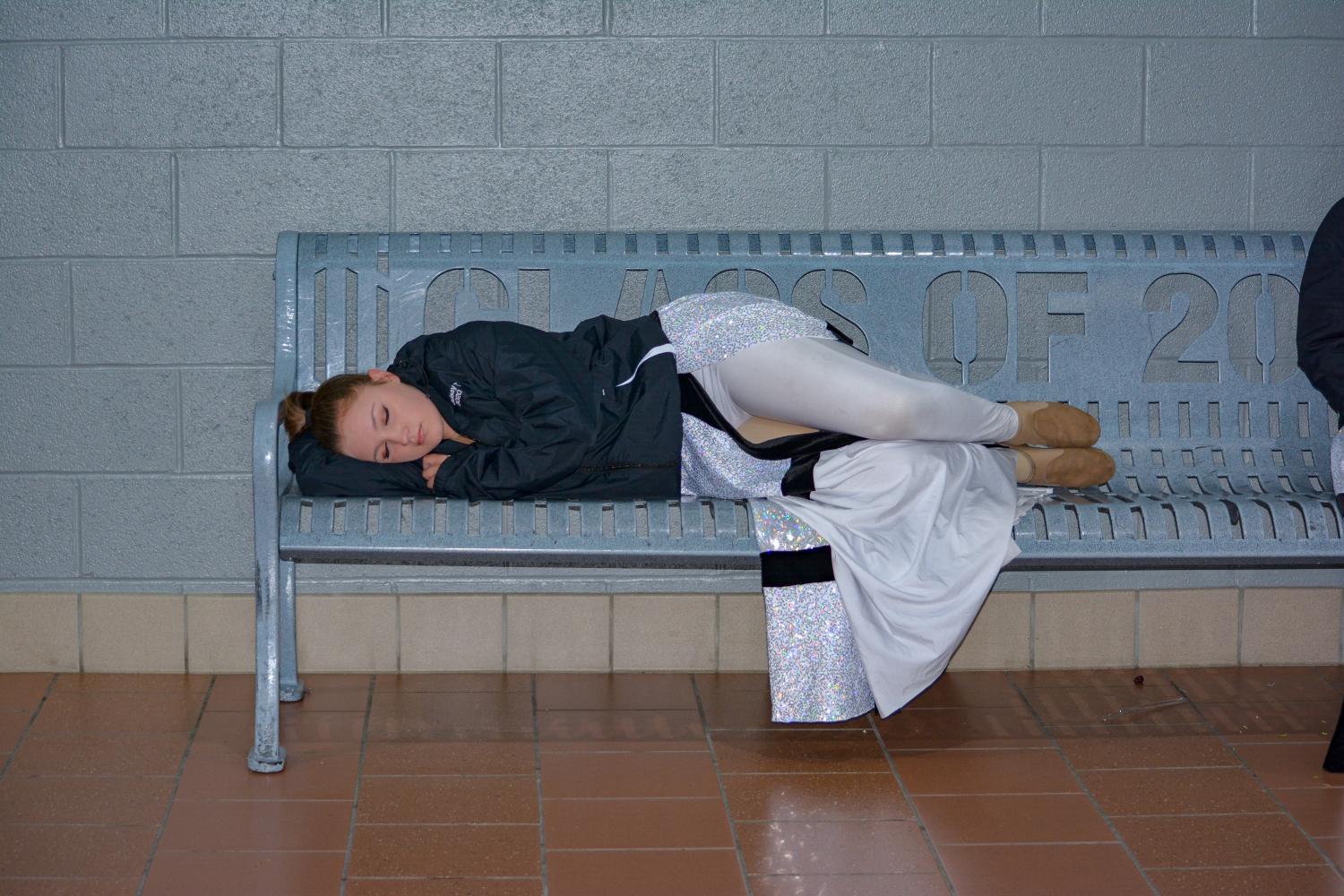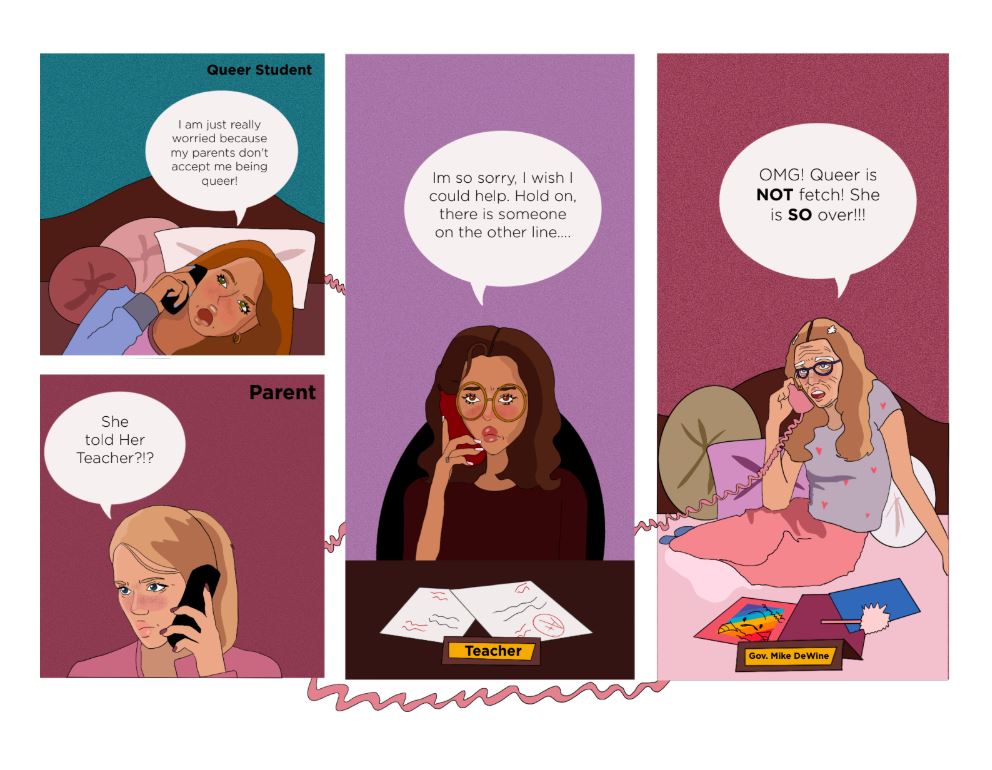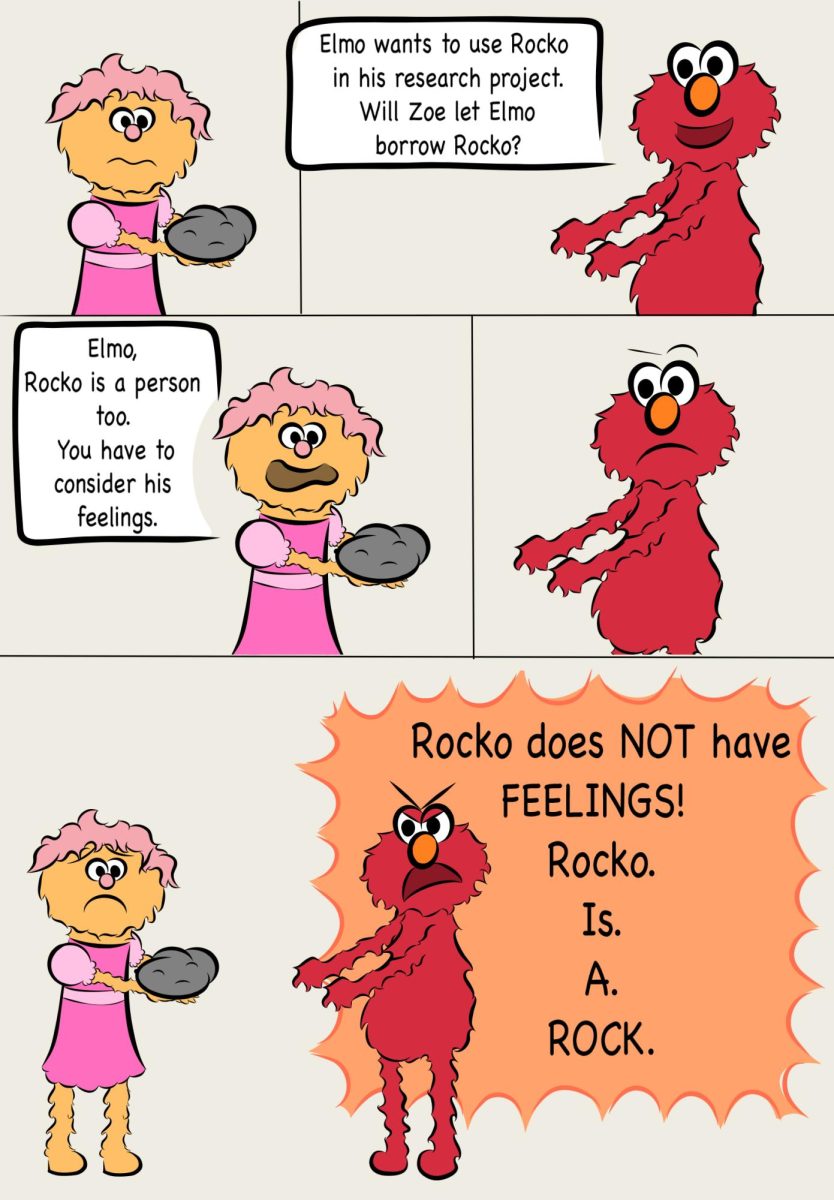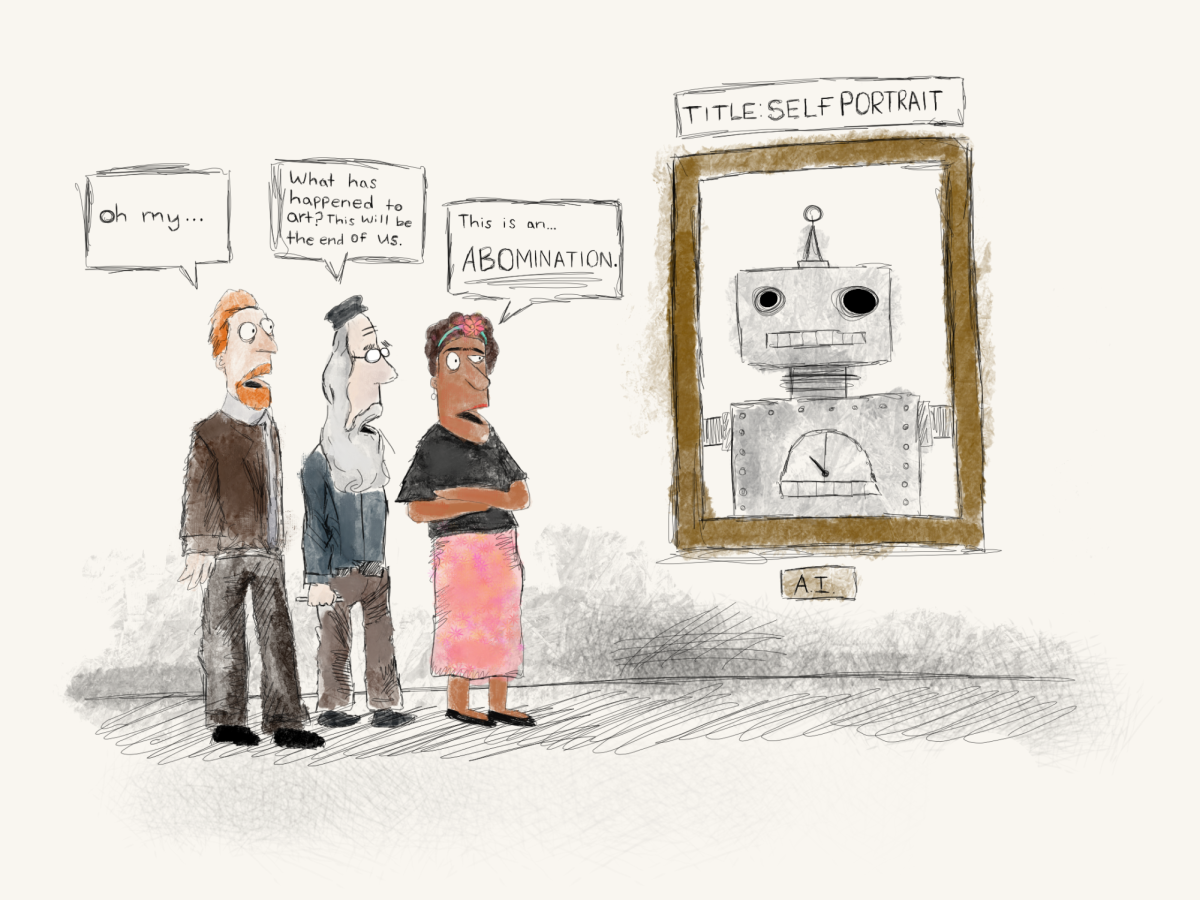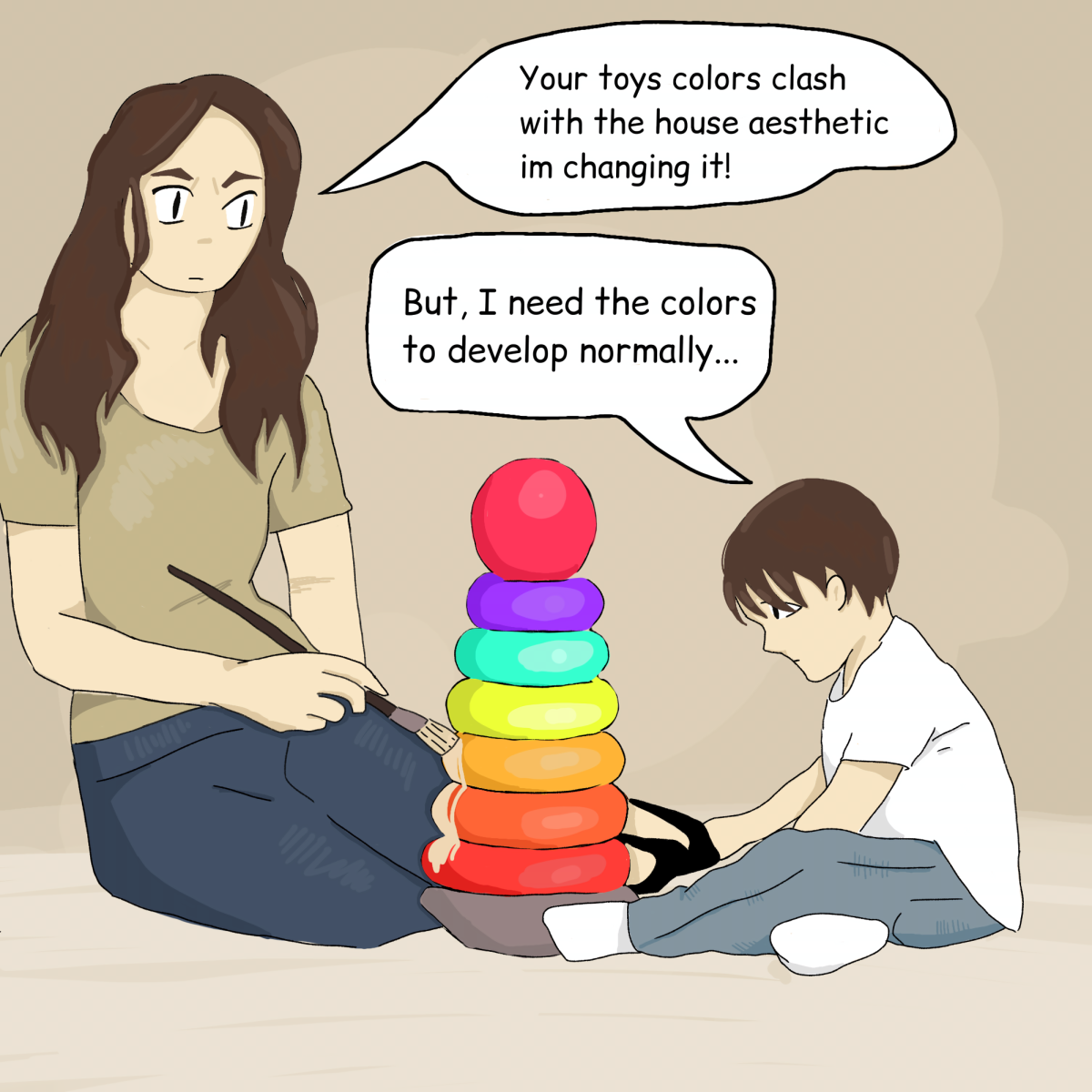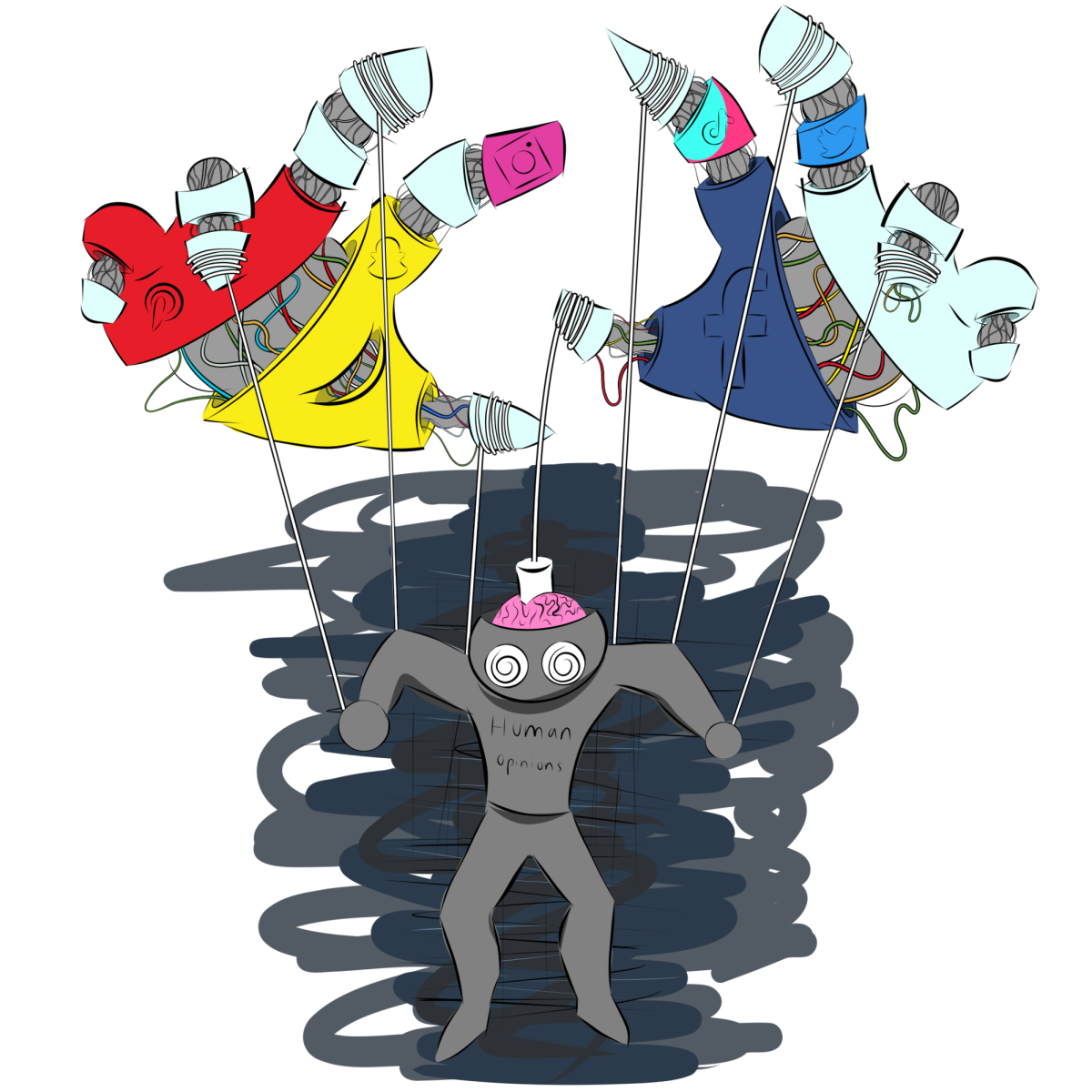A nursery washed in beige may look aesthetic on Instagram: linen curtains, muted furniture, and not a plastic rainbow in sight. To the social media user, it is perfect: calm, serene, and camera-ready.
But beneath the surface it is harmful. Through the eyes of a child, that muted palette is damaging and inconsiderate
Many see it as a chic, clever way to provide children with entertainment that does not clash with a homes’ earthy-toned style.
Though in all actuality, it is a selfish prioritization of aesthetics that takes fundamental development away from children.
Without a color filled environment a child’s visual development, ability to process images, and understand verbal cues is decreased.
The term “sad beige mom” was originally coined by influencer Hayley DeRoche when she critiqued a satirical children’s toy company that creates products lacking visual stimulation.
This term quickly gained popularity among many social media platforms, like Instagram and TikTok, whose users noticed a phenomenon where mothers would furnish their homes in a strictly beige color pallet.
Social media platforms can quickly create and disseminate idealistic trends, often involving lifestyle and parenting content.
This content is often showcasing a flawless lifestyle, with a trending muted aesthetic and perfect parenting.
Seeing influencers raising children in a spotless home dominated by a neutral palette can pressure viewers to uphold this visual standard, and if not done, experience the failure of feeling less than, and even like a “bad” parent.
Social media algorithms are designed to continue to push similar content that one has interacted with.
A user who has stumbled across a few videos with minimalist parenting might continue to see this style of video, and eventually feel the pressure to participate.
This ever growing herd-like mentality is creating a culture obsessed with neutrality in homes that can put a child at risk.
Eye surgeon Romesh Angunawela published a photo that demonstrated a baby’s vision in the first few months of life and how it develops in the first year.
It illustrates that until the baby reaches its fifth month, it is unable to vividly see color, meaning viewing the world as black and white for its first few months of life.
Neuropsychologist Sanam Hafeez’s studies have shown newborns can only really see shades of high contrast.
This is why toys are usually brightly colored; the sharply contrasting colors help the baby develop. These colors are easier for the baby to see and process, compared to muted colors with lower contrast.
As children age, so do the cells in the eye; the more color the baby sees, the better their retinas will process color.
The optic nerve serves the vital purpose of processing visual images and carrying them from the eye to the brain.
The American Academy of Ophthalmology states that the optic nerve grows rapidly in the first few years of life.
The more visual stimuli the eye receives, the more the optic nerve develops, which can happen by becoming exposed to bright colors.
The nerve expands and grows when receiving input from the baby’s developing senses.
Color can also help develop a child’s language and verbal cues.
As they learn the name of different colors and shades, they are able to connect it to different objects and emotions.
This allows children to assess, estimate, and define using critical thinking, allowing them to express themselves.
Making connections and noticing patterns in an environment provides children with skills needed to communicate with others.
Bright colors are crucial for a child’s development visually and verbally.
Parents should take these risks into serious consideration before designing a home that could delay thier child’s development.

